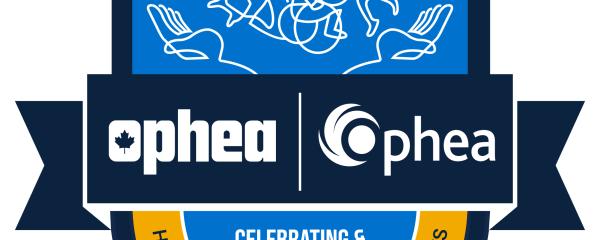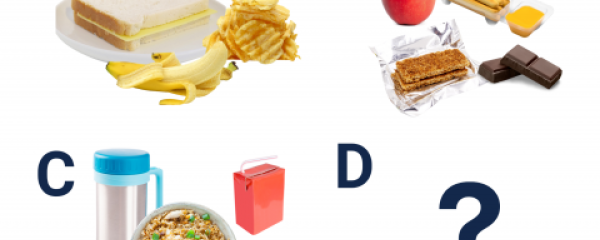What is it all about?
Students examine food packaging targeted at children to understand how food marketing techniques used on food packaging may influence their food and beverage choices. Students express their thoughts about advertising and use food marketing techniques to promote healthier eating habits in a variety of situations and settings.
Curriculum Connections
Grade 4
Health & Physical Education: A1.1, A1.3, A1.5, A1.6, D1.1, D2.1, D3.1
Language - Media Literacy: 1.1, 1.2, 1.3, 1.4, 1.6, 2.1, 2.2, 3.1, 3.2, 3.3, 3.4
Grade 5
Health & Physical Education: A1.1, A1.3, A1.5, A1.6, D2.2, D3.1
Language - Media Literacy: 1.1, 1.2, 1.3, 1.4, 1.6, 2.1, 2.2
Grade 6
Health & Physical Education: A1.1, A1.3, A1.5, A1.6, D2.1
Language - Media Literacy: 1.1, 1.2, 1.3, 1.4, 1.6, 2.1, 2.2, 3.1, 3.2, 3.3, 3.4
What is needed?
A variety of packaged and unpackaged foods and beverages. For example: sports energy drinks, cereal, crackers, chips, boxed fruit drinks, fruit, and vegetables. Find packaging and labels that contains food claims and uses celebrity endorsements.
How is it done?
- Select and display images of or bring in different food packaging and beverage labels that include food claims. For example, “organic,” “all natural,” “gluten free,” “fat free,” “no added sugar,” “excellent source of iron/vitamins/energy/high fibre,” and/or endorsements from a well-known person or fictional character.
- Have students work alone or in pairs and examine the images and food claims on the packaging to decide which food claims might be true or false. Then have students decide which foods might be healthier options. Have students share their decisions and the rationale for their choices.
- Facilitate a large-group discussion. Have students analyze the product packaging to determine how it might influence an individual’s food and beverage choice. For example, endorsements from an athlete or celebrity may make the product seem trendy or cool; package design features and food claims such as “improves mood” or “improves performance”; convenience, cost, and so on. Sample discussion prompts:
- “What makes one food or beverage more appealing to you over another?”
- “What do these food claims and/or endorsements make you think about the food or beverage?”
- “Why do you think these food claims have been included on the packaging or label?”
- “Why do you think the food claims are positioned where they are on the packaging?”
- “Identify some symbols used. What makes them look important? How do you think they’re designed to make them seem important to pay attention to when making food choices?”
- “Why do you think the food/beverage manufacturer chose the celebrity or fictional character to endorse the product?”
- “How might these food claims and/or endorsements influence someone’s food and beverage choices?”
- “How could you determine whether these food claims are accurate? What do you look for and why?”
- Have students examine the ingredients and nutrition labels to identify information that is not advertised on the packaging (e.g., sodium content, artificial sweeteners, preservatives). Have students reflect on and briefly discuss why this information is not advertised (i.e., displayed prominently on the packaging).
- Have students use the information from the ingredients and nutritional labels to revisit their choice for the healthier food and beverage options. Then have them determine whether their choice was accurate; if not, have them say if they would change their selection and why.
- Consolidate the discussion by having students consider which food packaging and beverage labels don’t have health claims and why (e.g., fruits, vegetables, water). Then have students identify criteria they could use when making informed choices about food or beverages (e.g., foods for energy for performance, physical health, brain health).
- Have students work in small groups to create a food marketing campaign message that educates others about food marketing claims and how to evaluate these claims to make healthier food choices as part of their personal guidelines for healthier eating. Have groups identify their target audience, choose a credible celebrity to endorse their message, and identify the media platform they will use to share their campaign message.
Opportunities for Assessment
- Use student responses in the large-group discussion to assess students’ understanding of how food marketing techniques influence people’s food choices.
- Use the group-generated food marketing campaign message to assess students’ understanding and application of food advertising and media conventions and techniques.
Ideas for Extension
- Use a guided inquiry approach, having students select and research symbols, products, ingredient labels, and product claims. Have students then report their findings to another group or the whole class.
- Have students create slogans to counter false or misleading food claims, such as “high in fibre,” “low in sugar,” or “not a significant source of vitamins and minerals.”
Educator Notes
- Students bring their learning home to their families, and they have variable amounts of control over the food they eat at home and the food they bring to school. Consult Creating a Safe and Inclusive Learning Environment for tips for talking about healthy food choices.
- Consult Additional Resources for more information about marketing techniques and their influences on people’s food choices.
- Consider accessing Canada’s Food Guide for more information about marketing influences on food choices.



